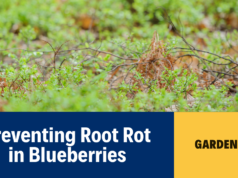
Welcome to a delightful journey into the world of organic strawberries! If you are passionate about gardening and want to savor the mouthwatering sweetness of strawberries while embracing sustainable practices, then this article is for you. In this section, we will explore the basics of growing organic strawberries, understanding their unique characteristics, and the numerous benefits of choosing organic methods.
Key Takeaways:
- Organic strawberries offer numerous benefits, including better taste, increased nutrient value, and reduced exposure to synthetic pesticides.
- Choosing organic methods for strawberry cultivation promotes environmental sustainability and supports biodiversity.
- Understanding the unique characteristics of organic strawberries helps ensure successful growth and abundant harvests.
- Organic strawberries require careful attention to soil preparation, planting techniques, and proper care and maintenance.
- With the right knowledge and techniques, you can enjoy the pleasure of harvesting and storing your own organic strawberries.
Factors for Successful Organic Strawberry Cultivation
To successfully grow organic strawberries, several key factors need to be considered and implemented. These factors include proper soil preparation, selecting the right strawberry varieties, and using effective planting techniques. By focusing on these aspects, you can maximize the growth and yield of your organic strawberry plants.
Soil Preparation
One of the most important factors in organic strawberry cultivation is soil preparation. Organic strawberries thrive in well-drained soil with a slightly acidic pH level ranging from 5.5 to 6.5. Before planting, ensure that the soil is rich in organic matter by incorporating compost or well-rotted manure. This helps improve soil fertility, drainage, and overall plant health.
Selecting the Right Strawberry Varieties
Choosing the right strawberry varieties is crucial for successful organic cultivation. Look for varieties that are disease-resistant and well-suited to your climate. Popular organic strawberry varieties include ‘Eversweet,’ ‘Seascape,’ and ‘Albion.’ These varieties have proven to perform well in organic growing conditions and produce high-quality, flavorful berries.
Planting Techniques
Proper planting techniques help ensure the healthy establishment of organic strawberry plants. When planting, create raised beds or mounds to improve drainage and prevent waterlogged soil. Space the strawberry plants around 12 to 18 inches apart, with rows set about 3 feet apart. This spacing allows for good air circulation, reducing the risk of fungal diseases.
In organic strawberry cultivation, soil preparation, selection of suitable strawberry varieties, and employing correct planting techniques are vital for achieving successful results.
By understanding these factors and implementing them into your organic strawberry cultivation practices, you can set the foundation for healthy plants, vigorous growth, and an abundant harvest of delicious, organically grown strawberries.
Preparing for Planting

Before you start planting organic strawberries, it’s crucial to prepare the ideal conditions for their growth. Proper site selection, soil preparation, and other necessary preparations will set the stage for a successful harvest. Here’s what you need to know:
Site Selection
When selecting a site for your organic strawberry garden, keep the following factors in mind:
- Sunlight: Choose a location that receives at least 6-8 hours of direct sunlight. Strawberries thrive in full sun.
- Drainage: Ensure that the chosen area has good drainage. Strawberries prefer moist, well-drained soil to avoid root rot.
- Proximity to water source: Consider the proximity of the site to a water source for easy irrigation.
Soil Preparation
Organic strawberries require nutrient-rich soil that is well-prepared for planting. Follow these steps:
- Clear the area: Remove any existing vegetation, rocks, or debris from the site.
- Test the soil: Conduct a soil test to determine its pH level and nutrient content. Strawberries prefer slightly acidic soil with a pH between 5.5 and 6.5.
- Amend the soil: Based on the soil test results, add organic matter such as compost or well-rotted manure to improve soil fertility and structure.
- Till the soil: Use a garden tiller or a shovel to loosen the soil to a depth of 6-8 inches and remove any clumps or weeds.
Other Preparations
In addition to site selection and soil preparation, there are a few other essential preparations to make before planting your organic strawberries:
“Proper site selection, soil preparation, and other necessary preparations will set the stage for a successful harvest.”
- Obtain quality strawberry plants: Purchase certified disease-free organic strawberry plants from a reputable source.
- Plan the layout: Determine the spacing and arrangement of your strawberry beds, keeping in mind that proper air circulation is important to prevent diseases.
- Install protective measures: If necessary, install bird netting or row covers to protect your strawberries from birds, pests, or extreme weather conditions.
- Prepare irrigation system: Set up a proper watering system or gather appropriate watering tools to ensure consistent moisture for your strawberry plants.
By taking the time to carefully prepare your site, soil, and other necessary aspects, you’ll create an optimal environment for your organic strawberry plants to thrive.
| Site Selection Checklist | Soil Preparation Checklist | Other Preparations Checklist |
|---|---|---|
| Sunlight | Clear the area | Obtain quality strawberry plants |
| Drainage | Test the soil | Plan the layout |
| Proximity to water source | Amend the soil | Install protective measures |
Care and Maintenance
Once your organic strawberries are planted, it’s important to provide proper care and maintenance to ensure healthy growth and abundant harvests. Taking care of your strawberry plants involves various tasks, such as watering, fertilizing, and implementing natural pest control methods.
Watering
Proper watering is essential to keep your organic strawberry plants thriving. Strawberries need consistent moisture, especially during the fruiting stage. The best way to water your plants is to provide a deep and thorough soaking, ensuring that the water reaches the roots.
Here are some key tips for watering your organic strawberries:
- Water your plants early in the morning to allow foliage to dry before the cooler evening temperatures.
- Avoid overhead watering as it can cause foliage diseases. Instead, use a soaker hose or drip irrigation to deliver water directly to the soil.
- Monitor the moisture level in the soil and adjust your watering schedule accordingly, aiming to keep the soil consistently moist but not waterlogged.
Fertilizing
Organic strawberries benefit from regular fertilization to promote healthy growth and maximize fruit production. Using organic fertilizers not only provides essential nutrients but also supports the overall health of the plants.
Here are some key tips for fertilizing your organic strawberries:
- Apply a well-balanced organic fertilizer specifically formulated for strawberries, following the package instructions for the appropriate dosage.
- Split the fertilizer applications into multiple sessions throughout the growing season, starting when the plants are established and continuing every four to six weeks.
- Avoid excessive fertilizer application, as it can lead to fertilizer burn and damage the plants. Always follow the recommended rates.
Natural Pest Control Methods
Maintaining a healthy and pest-free environment is crucial for the success of your organic strawberry garden. Implementing natural pest control methods helps to minimize the damage caused by common pests while maintaining the integrity of your organic practices.
Consider the following natural pest control methods for your organic strawberries:
- Companion planting: Grow aromatic herbs such as basil and marigold nearby to repel pests.
- Handpicking: Regularly inspect your plants for pests such as slugs and snails and remove them by hand.
- Natural predators: Encourage beneficial insects such as ladybugs and lacewings to establish in your garden to control pests naturally.
- Organic insecticides: Utilize organic insecticidal soaps or neem oil to target specific pest infestations when necessary.
By implementing these care and maintenance practices, you can ensure that your organic strawberries grow vigorously, producing bountiful, flavorful fruits without relying on synthetic chemicals.
| Task | Frequency | Note |
|---|---|---|
| Watering | Consistently | Keep soil moist but not waterlogged |
| Fertilizing | Every four to six weeks | Use well-balanced organic fertilizer |
| Natural Pest Control | As needed | Implement companion planting and natural predators |
Harvesting and Storage
Once your organic strawberries have reached their peak of ripeness, it’s time to harvest and savor the sweet rewards of your hard work. But how do you know when your strawberries are ready to be picked? And how can you ensure they stay fresh and delicious for as long as possible? In this section, we’ll explore the art of harvesting and the best practices for storing your organic strawberries.
Determining Strawberry Ripeness
Harvesting organic strawberries at the right time is crucial for maximum flavor and sweetness. Here are some key indicators that can help you determine if your strawberries are ripe:
- The fruit is fully red with no white or green areas.
- The berries are plump and firm to the touch.
- The aroma is strong and fragrant.
- The stems easily detach from the plant when gently pulled.
It’s important to note that strawberries do not ripen after they are picked, so make sure to choose only those that are fully ripe for the best flavor.
Picking Techniques
When it comes to picking your organic strawberries, gentle handling is key to prevent bruising and damage. Follow these tips for a successful harvest:
- Use your thumb and forefinger to grasp the strawberry near the stem.
- Gently twist and pull the berry, applying minimal pressure to avoid squishing it.
- Avoid pulling on the green cap, as this can cause the berry to spoil more quickly.
- Place the harvested strawberries in a shallow container or basket to avoid crushing the delicate fruit.
Proper Storage Techniques
To prolong the freshness and flavor of your organic strawberries, it’s important to store them correctly. Here are some tips to help you maintain their quality:
- Do not wash strawberries before storing, as excess moisture can lead to mold growth.
- Remove any damaged or overripe strawberries from the batch to prevent them from spoiling the rest.
- Store strawberries in a single layer in a breathable container, such as a paper towel-lined basket or shallow tray.
- Place the container in the refrigerator’s crisper drawer to keep the berries cool and extend their shelf life.
- Avoid storing strawberries near strong-smelling foods, as they can absorb odors easily.
By following these harvesting and storage techniques, you can enjoy the full flavor and freshness of your organic strawberries for days to come.
| Don’ts | Do’s |
|---|---|
| Don’t pick strawberries that are still white or green. | Do pick strawberries that are fully red and plump. |
| Don’t pull on the green cap when picking. | Do grasp the strawberry near the stem and gently twist to detach it. |
| Don’t wash strawberries before storing. | Do store unwashed strawberries in a breathable container in the refrigerator. |
| Don’t store strawberries near strong-smelling foods. | Do keep strawberries in the crisper drawer to maintain freshness. |
Troubleshooting Common Issues
Even with the best care and attention, organic strawberry plants may encounter various challenges that can affect their growth and productivity. It’s essential to be aware of common problems such as pests, diseases, and nutrient deficiencies and understand how to identify and address them effectively. By troubleshooting these issues promptly, you can ensure the health and vitality of your organic strawberry plants.
1. Pests
Pests, such as aphids, slugs, and strawberry bud weevils, can cause damage to your organic strawberry plants. Look out for signs of pest infestation, including chewed leaves, holes in fruits, and wilting plants. To manage these pests:
- Remove any damaged or infested plant parts to prevent the spread of pests.
- Introduce beneficial insects, such as ladybugs or lacewings, which prey on common strawberry pests.
- Use organic pest control methods like neem oil or insecticidal soaps to deter pests.
2. Diseases
Diseases, such as gray mold (Botrytis cinerea), powdery mildew, and strawberry leaf spot, can impact the health and yield of your organic strawberry plants. Watch for symptoms like rotting fruit, discolored leaves, or white powdery patches. To prevent and manage diseases:
- Ensure proper airflow and spacing between plants to reduce humidity and minimize disease spread.
- Remove infected plant material promptly to prevent the spread of pathogens.
- Apply organic fungicides or use natural remedies like baking soda spray or sulfur dust to control fungal diseases.
3. Nutrient Deficiencies
Organic strawberry plants require a balanced supply of nutrients to thrive. Common nutrient deficiencies include nitrogen, phosphorus, and potassium. Look for signs such as stunted growth, yellowing leaves, or poor fruit development. To address nutrient deficiencies:
- Conduct a soil test to identify specific nutrient deficiencies.
- Amend the soil with organic fertilizers or compost to replenish the necessary nutrients.
- Practice crop rotation to prevent nutrient depletion and maintain soil fertility.
Remember, regular monitoring and proactive care are key to troubleshooting and resolving common issues in your organic strawberry plants. By promptly addressing pest infestations, diseases, and nutrient deficiencies, you can ensure healthy and bountiful harvests.
Understanding Organic Strawberries
Dive deeper into the world of organic strawberries to gain a better understanding of what sets them apart from conventionally grown strawberries. By choosing to grow strawberries organically, you not only contribute to your own well-being but also to the health of the environment.
Benefits of Organic Methods
- Reduced chemical exposure: Organic strawberries are grown without the use of synthetic pesticides, herbicides, or fertilizers, reducing your exposure to harmful chemicals.
- Enhanced flavor and nutrition: Organic strawberries often have a more intense flavor and higher nutrient content compared to conventionally grown strawberries.
- Support for ecosystem health: By adopting organic methods, you help promote biodiversity, preserve soil quality, and protect water sources from pollution.
- Sustainable farming practices: Organic cultivation focuses on long-term sustainability, striving to minimize environmental impact and conserve natural resources.
Did you know? Organic strawberries are often smaller in size compared to their conventionally grown counterparts. However, they make up for it with exceptional sweetness and flavor.
Clearing the Confusion
There is sometimes confusion about the term “organic” and what it truly means. When it comes to strawberries, organic refers to the way the fruits are grown and the farming practices involved. Organic farmers prioritize soil health, natural pest control, and responsible land management methods.
Conventionally grown strawberries, on the other hand, may be subjected to chemical interventions to enhance growth, control pests, and increase yields. These synthetic inputs can have long-lasting impacts on the environment and may leave residue on the berries.
The Organic Difference
In addition to being grown without synthetic chemicals, organic strawberries are typically cultivated using sustainable techniques that nourish the soil and promote natural ecosystem balance. These methods may include:
- Compost utilization
- Crop rotation
- Cover cropping
- Biological pest control
The emphasis on organic matter in the soil helps improve its structure, water retention capacity, and nutrient availability, ultimately benefiting the plants and enhancing their ability to resist pests and diseases.
Understanding the distinction between organic and conventionally grown strawberries empowers you to make informed choices based on your values, health concerns, and desire to support sustainable agriculture.
Choosing the Right Strawberry Varieties

When it comes to organic cultivation, not all strawberry varieties are created equal. To ensure a successful and thriving organic strawberry garden, it’s important to choose the right types of strawberries that are well-suited for organic growing conditions. By selecting the right varieties, you can maximize your harvest and enjoy the sweetest and most flavorful berries.
Here are some factors to consider when choosing the right strawberry varieties for your organic garden:
- Taste: Different strawberry varieties offer varying levels of sweetness, tartness, and flavor profiles. Consider the taste preferences of you and your family when making your selection.
- Size: Some strawberry varieties produce small or medium-sized berries, while others yield large fruits. Think about whether you prefer smaller berries for snacking or larger berries for desserts and preserves.
- Yield: Certain strawberry varieties are more prolific, producing a higher quantity of berries per plant. This can be advantageous if you’re looking to harvest a large bounty for fresh consumption or preserving.
- Climate: Different strawberry varieties have specific climate requirements. Consider the climate conditions in your area and choose varieties that are known to thrive in your region.
Fortunately, there are many tried and tested strawberry varieties that are well-suited for organic cultivation. Here are a few popular options:
“Seascape” is a widely grown variety known for its exceptional flavor and large fruit size. It is also well-adapted to various climates and exhibits good disease resistance.
“Albion” is another popular choice for organic growers due to its high yield and excellent taste. It produces large, firm berries with a sweet and juicy flavor.
“Chandler” is a favorite amongst organic strawberry enthusiasts. This variety is known for its large, sweet, and aromatic berries, making it perfect for fresh eating and desserts.
Remember, it’s crucial to choose organic strawberry varieties that have been specifically bred for organic cultivation. These varieties are often more resistant to pests and diseases, translating into a healthier and more successful strawberry garden.
By selecting the right strawberry varieties and considering factors such as taste, size, yield, and climate suitability, you can ensure a bountiful and delicious harvest from your organic strawberry garden.
Recommended Strawberry Varieties for Organic Cultivation
| Variety | Taste | Size | Yield | Climate Suitability |
|---|---|---|---|---|
| Seascape | Sweet and flavorful | Large | High | Adaptable |
| Albion | Sweet and juicy | Large | High | Various |
| Chandler | Sweet and aromatic | Large | Medium | Various |
FAQ
Q. What are the benefits of growing organic strawberries?
A. Growing organic strawberries offers numerous benefits. They are free from synthetic pesticides and fertilizers, making them healthier for you and the environment. Organic strawberries also tend to have higher levels of antioxidants and a more intense flavor compared to conventionally grown strawberries.
Q. What are the key factors for successful organic strawberry cultivation?
A. Successful organic strawberry cultivation relies on several factors. These include selecting the right strawberry varieties that are well-suited for organic growing conditions, properly preparing the soil, and using appropriate planting techniques. Additionally, providing adequate care and maintenance, such as regular watering and natural pest control methods, is crucial.
Q. How do I prepare for planting organic strawberries?
A. Before planting organic strawberries, it’s important to choose a suitable site with well-draining soil and full sun exposure. Prepare the soil by removing weeds and incorporating organic matter, such as compost. This will provide the necessary nutrients and improve the soil structure for healthy growth.
Q. How do I care for and maintain organic strawberries?
A. Proper care and maintenance are vital for the health and productivity of organic strawberries. Water the plants regularly, ensuring the soil is consistently moist but not waterlogged. Fertilize with organic options, such as compost or well-rotted manure, to provide essential nutrients. Employ natural pest control methods, such as companion planting or introducing beneficial insects, to keep pests under control.
Q. How do I harvest and store organic strawberries?
A. Harvest ripe organic strawberries by gently pulling them from the stem, being careful not to damage the fruit. Look for fully red berries with a sweet fragrance. After harvesting, store the strawberries in a cool place or in the refrigerator to maintain freshness. Avoid washing them until right before consumption to prevent moisture buildup.
Q. What are some common issues when growing organic strawberries?
A. Organic strawberry plants may face pests, diseases, and nutrient deficiencies. Common pests include aphids, slugs, and spider mites, which can be controlled using organic methods like neem oil or diatomaceous earth. Diseases such as powdery mildew or gray mold can be managed by improving air circulation and practicing proper sanitation. Nutrient deficiencies can be addressed by using organic fertilizers or adjusting the pH level of the soil.
Q. What makes organic strawberries different from conventionally grown strawberries?
A. Organic strawberries are grown without the use of synthetic pesticides, herbicides, or fertilizers. Instead, organic growers rely on natural methods to maintain soil health, control pests, and enhance plant growth. Choosing organic strawberries supports sustainable farming practices and reduces the exposure to harmful chemicals.
Q. How do I choose the right strawberry varieties for organic cultivation?
A. When selecting strawberry varieties for organic cultivation, consider those that are disease-resistant and adapted to your specific growing conditions. Some popular organic strawberry varieties include ‘Seascape,’ ‘Albion,’ and ‘Eversweet.’ Consult with local nurseries or agricultural extension services for recommendations tailored to your region.
Conclusion
Congratulations on gaining a comprehensive understanding of organic strawberry cultivation! By choosing organic methods, you not only reap the benefits of delicious and healthy strawberries but also contribute to a healthier environment. Throughout this article, we’ve covered the essentials of growing organic strawberries, from soil preparation to care and maintenance, harvesting, and troubleshooting common issues.
Remember, successful organic strawberry cultivation starts with thorough site selection and proper soil preparation. Choose the right strawberry varieties adapted to organic growing conditions, and follow recommended planting techniques. Providing diligent care and maintenance, including regular watering, organic fertilization, and natural pest control, will ensure strong and productive plants.
When it’s time to harvest your organic strawberries, use the right picking techniques to maintain their optimal freshness and flavor. And should you encounter any challenges along the way – whether it’s pests, diseases, or nutrient deficiencies – be sure to promptly identify and address them to preserve the health and productivity of your plants.
Now is the perfect time to embark on your own organic strawberry garden journey. So, secure your gardening gloves and get ready to enjoy the incredible taste and satisfaction of homegrown, organic strawberries. Happy cultivating!
















